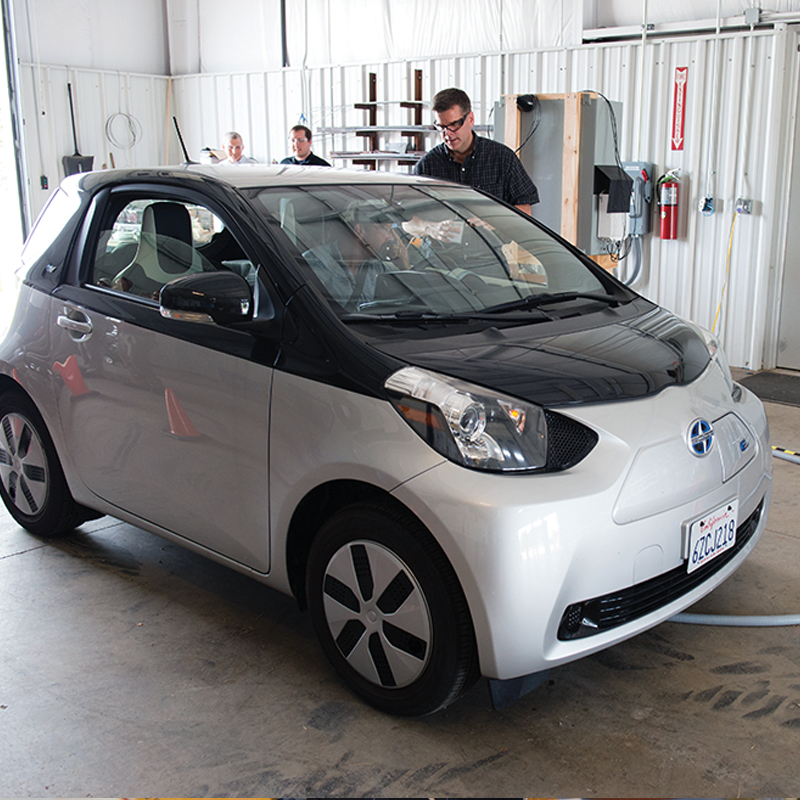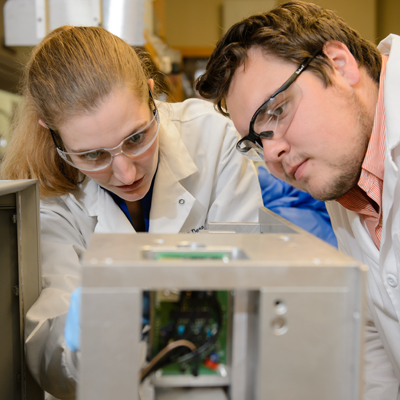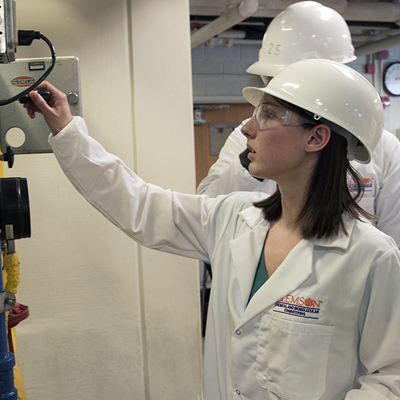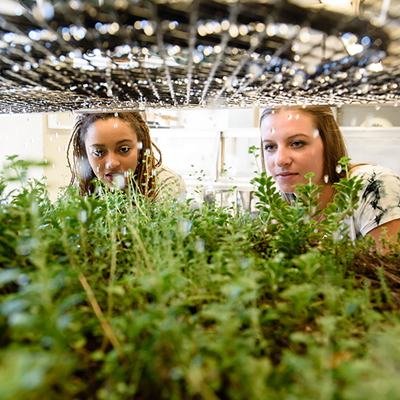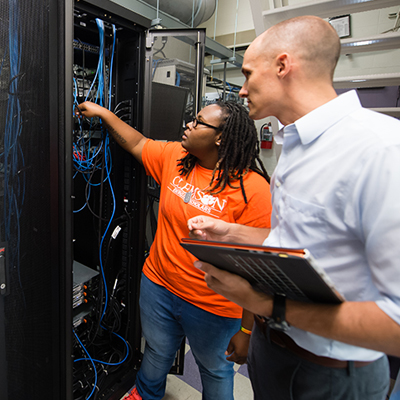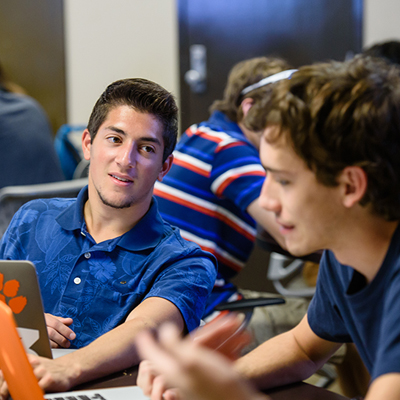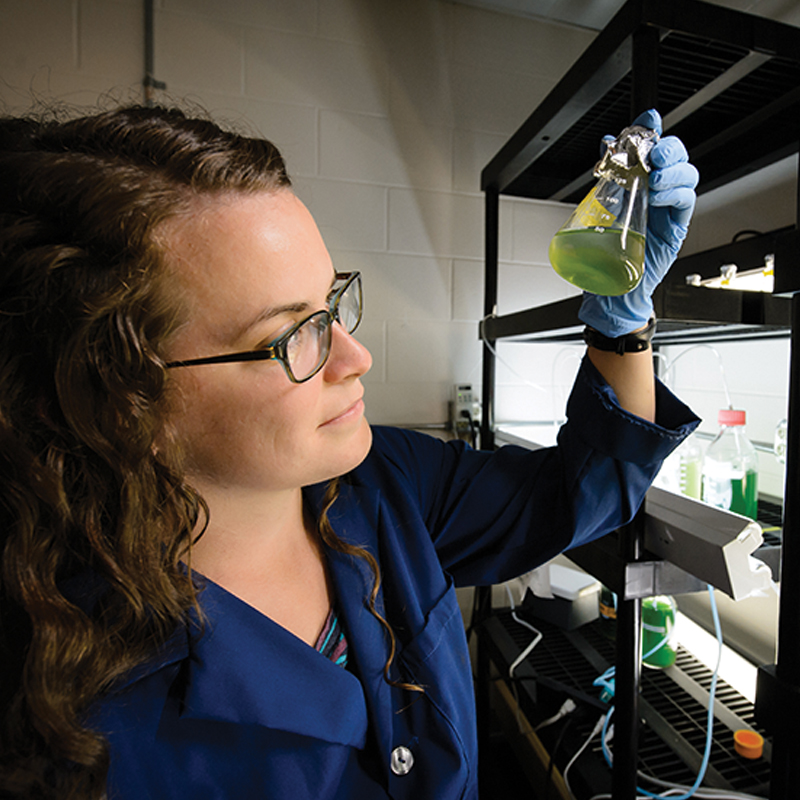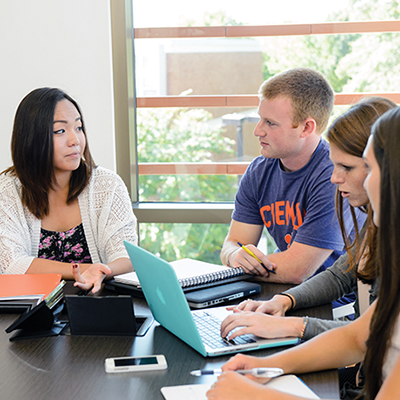A World of Difference
With Clemson as their collective backyard, six faculty from five countries earned one of the nation’s highest honors for junior faculty this year.
Alumni Spotlight
Meet the Thomas Green Clemson Academy inductees.
Faculty Spotlight
Lisa Benson, new editor of ASEE’s Journal of Engineering Education (JEE).
FROM THE DEAN
Our shared experiences make us richer and stronger.
Upstate South Carolina may seem an unlikely melting pot of international culture, but those of us who live and work on campus know better. At last spring’s commencement, the College of Engineering, Computing and Applied Sciences alone graduated 821 students from 23 nations.
Twenty-three. Take a moment to let that sink in.
While many come from China and India, their geographical diversity is striking. From Iran to Ecuador, students from virtually every corner of the globe are choosing Clemson. And it’s not only our students but also our faculty who reflect this diversity.
It’s no mystery why Clemson draws such a diverse population. Sophie Joerg, an assistant professor in the School of Computing, speaks with authority in this issue of IDEAS, saying: “A lot of people come to the U.S. because the U.S. is still leading when it comes to research institutions. I think that attracts a lot of people. That’s the way we want to be.”
Clemson is clearly among those institutions. By welcoming some of the world’s best students and faculty, we serve as a gateway for U.S. innovation, bringing bright, young minds to our campus and by virtue of that, our state and our nation.
This issue highlights several noteworthy examples of how the college’s international community is thriving. Six of our assistant professors, representing five different countries, won CAREER awards from the National Science Foundation. Two are from India, and the others hail from Brazil, Iran, Italy and Germany. This award is among the nation’s most prestigious for junior faculty members and is a good predictor of their future success.
The CAREER award story is only one among several in this issue that underscore Clemson’s global impact.
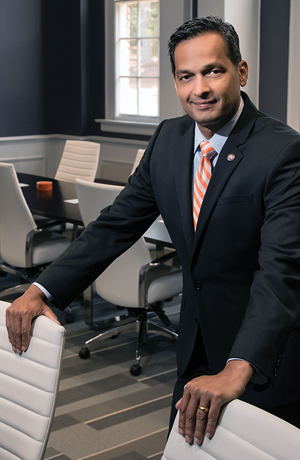
Ronnie Chowdhury, Laine Mears and Robert Prucka are playing key roles in creating new smart infrastructure, manufacturing processes and automobiles that are shaping the future of transportation. Their work could fundamentally change how we move people and goods not only across town but around the world.
We also feature two bioengineers. Sarah Harcum has received $6 million to engineer better biopharmaceuticals. Melinda Harman is teaching students to clean, sterilize and design medical instruments so they can be reused, cutting back on medical waste while reducing hospital costs. Further, we highlight three new members of the Thomas Green Clemson Academy of Engineers and Scientists, the college’s highest honor. One new member, Janine Anthony Bowen, became the first female inducted into the academy.
History tells us that wherever great minds gather, they will innovate. They will think big, conduct cutting-edge research and address our great challenges. Clemson, like the state and nation as a whole, is building on an American tradition more than 200 years in the making. It is in our DNA to come together, bound by common principles and the enduring hope that we can make our future better than the present.
Anand Gramopadhye, Dean
College of Engineering and Science
With Clemson as their collective backyard, six faculty from five countries individually earned one of the nation’s highest honors for junior faculty this year. The result: life-altering research that’s happening close to home and making …
A WORLD OF DIFFERENCE
For more than a century, some of the globe’s greatest innovators have made their way to the United States to pursue their work in a country known for research excellence. Albert Einstein found refuge from Nazi Germany in Princeton, New Jersey. Nikola Tesla came up with his most famous inventions after immigrating from the Austrian Empire. Scottish-born Alexander Graham Bell did some of the critical work that led to the telephone in Boston.
Clemson’s College of Engineering, Computing and Applied Sciences continues to foster that important tradition, maintaining itself as a melting pot of pioneering thought and innovation. Nowhere is this more notably on display than with the recent announcement of Clemson’s 2017 CAREER awards.
The National Science Foundation CAREER award stands as one of the highest honors for junior faculty members and is considered a reliable gauge for predicting future career success. This year, all of the college’s six awardees were born and raised outside of the United States: Two come from India and four others hail from Brazil, Iran, Italy and Germany.
American universities continue to be regarded as some of the best, with faculty from around the world. Clemson celebrates that diversity alongside CAREER awardees’ commitment to their disciplines in the fields of engineering, computing and applied sciences. These men and women are global innovators. Just as important, they are our Clemson neighbors.
By Paul Alongi

LUIZ JACOBSOHN first came to the United States in 2002 to work as a postdoctoral research associate at Los Alamos National Laboratory in New Mexico, but his ideas about the country started forming when he was growing up in Brazil.
His parents knew something about the United States because they had lived in the country in the 1960s before Jacobsohn was born.
“I was raised with the idea that the United States is the land of opportunity, and I still think it is,” Jacobsohn said. “It’s because the country is capable of accepting everyone and, in a good way, taking advantage of the mix. It’s like food. Each different one is a little spice, and in the end, it tastes so good.”
Jacobsohn, with his son, arrived in Clemson as a research associate in 2009 to work with John Ballato on shared interests, core shell nanoparticles and transparent ceramics. He rose through the ranks and is now an assistant professor of materials science and engineering with a CAREER award.
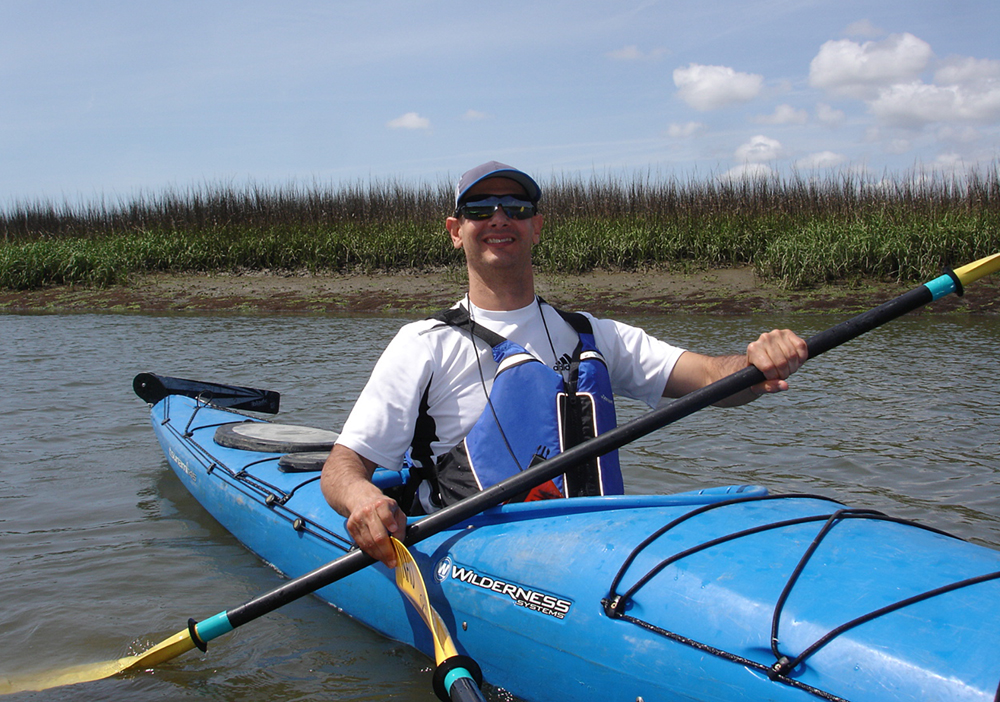
His work is aimed at making scintillators and dosimeters work more efficiently. Better scintillators could mean medical patients would be exposed to less radiation when they go for CT scans. The Jacobsohn team will experiment with the composition and structure of metal oxides in hopes of finding a general rule that guides the fabrication of the metal oxides to help control for the presence of electronic traps. The team includes students from China and Russia.
Jacobsohn said the foreign nationals he knows respect the advantages they have found in the U.S. “These people have an inner driving force. It’s not an easy thing to leave family, friends and culture behind and establish yourself in a different environment. You don’t have that natural support you have at home. These people will continue to have that driving force to succeed.”✲
SOPHIE JOERG learned what it means to be part of the Clemson Family in her first year as an assistant professor when she found herself in a group of eight new faculty members who were all trying to navigate the ins and outs of the University. They decided to work together, helping set the tone as she began her career in the School of Computing.
“It’s definitely been clear: You get hired because people want you to succeed, and they will help you with that,” Joerg said. “Once you get in, people will try helping you. If you succeed, that’s great for everybody else. That is something I appreciate.”
Joerg came to the United States from Germany to work with Jessica Hodgins at Cornell University. She joined Clemson’s faculty in 2012 and received a CAREER award this year. Her research is aimed at finding new ways to make hands and fingers come to life on the screen. It currently is a tedious and time-intensive task, and she plans to design algorithms that will automate the work.
“Once you get in, people will try helping you. If you succeed, that’s great for everybody else.”
The idea for her research came from her experience as an animator on the German TV series “Dragon’s Rock.” Now, Joerg has the backing of a research group that reflects the diversity of Clemson itself with students from China, India and the United States.
“All those people like research,” she said. “In this case, they are attracted to computer graphics research. A lot of people come to the U.S. because the U.S. is still leading when it comes to research institutions. I think that attracts a lot of people. That’s the way we want to be.” ✲
AMIN KHADEMI was living in his home country of Iran when he decided that if he wanted to do high-quality research and flourish as he worked toward his Ph.D., his best option would be to head for the United States.
Khademi wanted to apply mathematics to health care to save lives. He found one of the field’s leading experts, Andrew J. Schaefer, at the University of Pittsburgh. For five years, Khademi worked with Schaefer, who is now at Rice University. After graduation, Khademi joined Clemson as an assistant professor of industrial engineering in 2013.
“I saw that the industrial engineering department at Clemson was booming,” Khademi said. “My feeling was that this department was growing and that people had a good vision, and I wanted to be part of that vision.”
Khademi’s CAREER award followed a little more than three years later.
He is using a highly advanced mathematical technique, stochastic dynamic programming, to help researchers identify which treatments in clinical trials are most effective and then make adjustments as early as possible. His research could help save billions of dollars in drug development, bring treatments to market more quickly and save the lives of patients who might otherwise be assigned to inferior treatments.
Khademi has help from a lab of students packed with international diversity, coming from India, Iran, Turkey and the United States.
“What I see is that people in academia care about advancing knowledge,” Khademi said. “This is the philosophy of an engineer. An engineer is someone who makes something. We all want to make something for human beings. This is our vision. No matter what color you are, what language you are speaking, we are committed to this vision.” ✲
ASHOK MISHRA has always preferred small towns, whether he was growing up in eastern India or working as a postdoctoral researcher at Texas A&M. So, when it came time for him to find a faculty position, Clemson University’s bucolic setting on the shores of Hartwell Lake helped him feel right at home.
“All my education was in small cities,” he said. “I’m a country boy.” Mishra, an assistant professor of civil engineering, received his CAREER award to support research that earned him the nickname “Dr. Drought” among some of his colleagues.
He is building a computer model that will incorporate more factors than drought forecasters currently use and could help predict drought effects as early as six months before they are felt.
It could help engineers, scientists and policymakers better understand the world’s most widespread natural disaster.
The CAREER award is just the latest in a series of American dreams that keep coming true for Mishra, who grew up near Hirakud Dam, the longest major earthen dam in India. His other dreams included working as a postdoctoral researcher in the United States and at a national lab.
Mishra was a postdoctoral researcher at Pacific Northwest National Laboratory when he gave up a promotion to join Clemson’s faculty and start his own research group, lured in part by the high-level research environment and the opportunity to contribute his expertise.
“I could see this was the place to go and collaborate,” he said. ✲
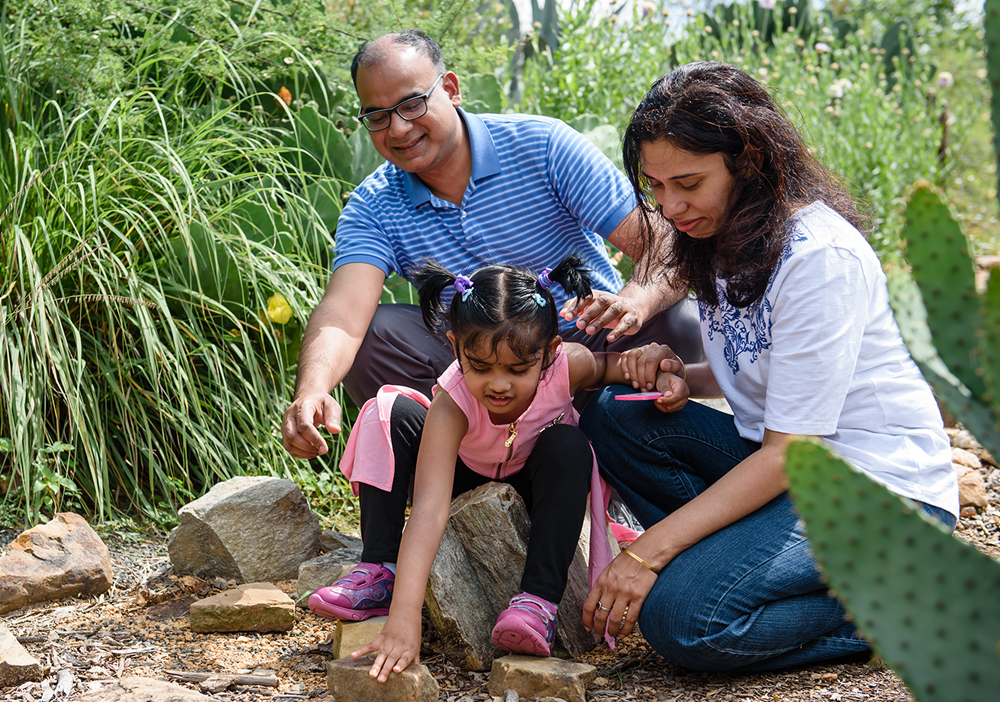
SIMONA ONORI first arrived in the United States in 2004 to get her master’s degree at the University of New Mexico. She returned to her home country of Italy to pursue her Ph.D. and to be with family but felt the tug to return to America to pursue her passion for application-based research. So, when Onori had an offer to work at Ohio State as a postdoctoral researcher, she took it.
Onori, an assistant professor, became interested in automotive-control research and started to build computer models. When it came time to join a faculty, Clemson’s Department of Automotive Engineering seemed a perfect fit.
“I had other offers, but I felt this place was the right place to establish myself as a professor and to create my research group,” she said. “The facilities at the Clemson University International Center for Automotive Research are great. I had an opportunity to create my own lab. It was a no-brainer.”
Onori’s CAREER award is aimed at reducing fine-particle emissions in gasoline direct injection engines. Her work could help automakers meet increasingly rigorous fuel and exhaust-emission requirements around the world.
The Onori team will use advanced modeling techniques to predict when soot will accumulate in gasoline particulate filters and when to burn it off to prevent plugs and keep the engine running smoothly. Onori said she learns every time she works with her Ph.D. students, who are currently from China, India and the United States.
“What we share is a love for research and a passion for solving problems — problems that are very important to society,” she said. ✲
SAPNA SARUPRIA remembers reading Chemical Engineering Progress magazine while she was an undergraduate in India and finding herself drawn to the articles written by researchers from U.S. companies, including Dow and DuPont. She wanted to work at one and saw a path forward by pursuing post-graduate studies in the United States.
Sarupria went to Texas A&M for her master’s degree and Rensselaer Polytechnic Institute for her Ph.D. Along the way, she was bitten by the higher-education bug and decided to change course for a career in academia. It’s a choice that led her to Clemson University and a CAREER award.
Sarupria expects her research will begin laying the groundwork for new materials that could be added to water so that ice will grow at a specified rate and temperature. The research could help develop new ways of preserving food, studying climate, cryopreserving organs and protecting crops.
She will be using specialized software her team developed and Clemson’s computing power to speed up sampling by more than a factor of 20. Her approach narrows down the options to the most promising materials, which can then be tested in a lab. Physically testing each possible material would take much longer and cost more.
Two key factors that attracted Sarupria to Clemson were the exceptional power of the Palmetto Cluster supercomputer and the good feeling she had after her interview with David Bruce, who is now interim chair of the Department of Chemical and Biomolecular Engineering.
“A lot of calculations that we can do other people cannot think of doing,” Sarupria said. “I also got comfortable during my visit. It’s the gut feeling that you go with, and Clemson had that for me.”
Sarupria’s academic career gives her a chance to mentor students through the hard work and ups-and-downs they face as they pursue their degrees. Some are international students who have chosen a path similar to hers, saying goodbye to family, friends and familiar traditions to pursue new opportunities in another country.
Like Einstein, Tesla and Bell before them, these researchers enrich the cultural treasure chest that America has long tended, serving as shining gems both for Clemson and their respective home countries. ✲
END ♦ IDEAS Fall 2017
AUTOMOTIVE ADVANCES:
ROAD WARRIORS
Clemson-based research center could put a stop to red lights and get motorists moving at the speed of commerce and life.
By Paul Alongi

Chowdhury, left, works with a graduate student on the stoplight server.
Mashrur “Ronnie” Chowdhury envisions a future in which car accidents will be reduced to virtually zero and drivers will travel down some of the state’s busiest roads without stopping for a single traffic light.
It could begin to happen in as little as a decade, he said, with the help of a new center that will be based out of Clemson University thanks to $1.4 million in startup financing from the U.S. Department of Transportation. Chowdhury, a civil engineering professor who is leading the center, said another $6.4 million in continued funding from the department over the next five years is highly possible.
The new Center for Connected Multimodal Mobility brings together researchers from Clemson, Benedict College, The Citadel, South Carolina State University and the University of South Carolina. Researchers plan to focus on finding new ways to improve the mobility of people and goods with a special focus on how the emerging “Internet of Things” applies to transportation.
Chowdhury expects that it will soon be standard for vehicles to wirelessly communicate with each other, pedestrians and infrastructure, such as traffic lights and roadside sensors. The innovations that arise will revolutionize travel, making it safer and more comfortable for drivers, he said.
Technology test case
Woodruff Road, an artery in Greenville, about 45 minutes from Clemson and known for congestion, could house an early prototype that showcases how new technology could work, Chowdhury said.
“Each traffic signal will have a highly intelligent brain, a controller that is operating the light in real time based on existing and predicted vehicular and pedestrian demand,” he said. “In real time, signal timing at each intersection will be optimized and coordinated to improve corridor-wide traffic flow. Each signal will communicate what speed each vehicle should drive to avoid having to stop. The travel will be a pleasure.”
But that’s just the start. Several researchers across the state are envisioning the transportation system as a vast web of connections that includes everything from driverless trucks to Uber rides to the ports and railroads.
Weaving it all together holds great promise but will require research in an array of fields, including cybersecurity; big data; and the new technology’s social, economic, political and psychological impacts, Chowdhury said.
Clemson is taking on the task along with 19 other universities nationwide that have been chosen by the U.S. Department of Transportation to lead Tier 1 university transportation centers. An advantage South Carolina researchers enjoy is that they have access to parts of the fourth-largest state-maintained road system in the country. The state has 41,500 miles of interstate, federal and state highways, and secondary roads, giving researchers a wide variety of road types to work with, Chowdhury said.
“We are working very closely with the South Carolina Department of Transportation,” said Chowdhury, who is the Eugene Douglas Mays Professor of Transportation. “We will provide the software and infrastructure that we develop for the center to the public. The roads will be a real-world testbed and laboratory where we do our research on connected and driverless vehicles; but it also benefits the state.”
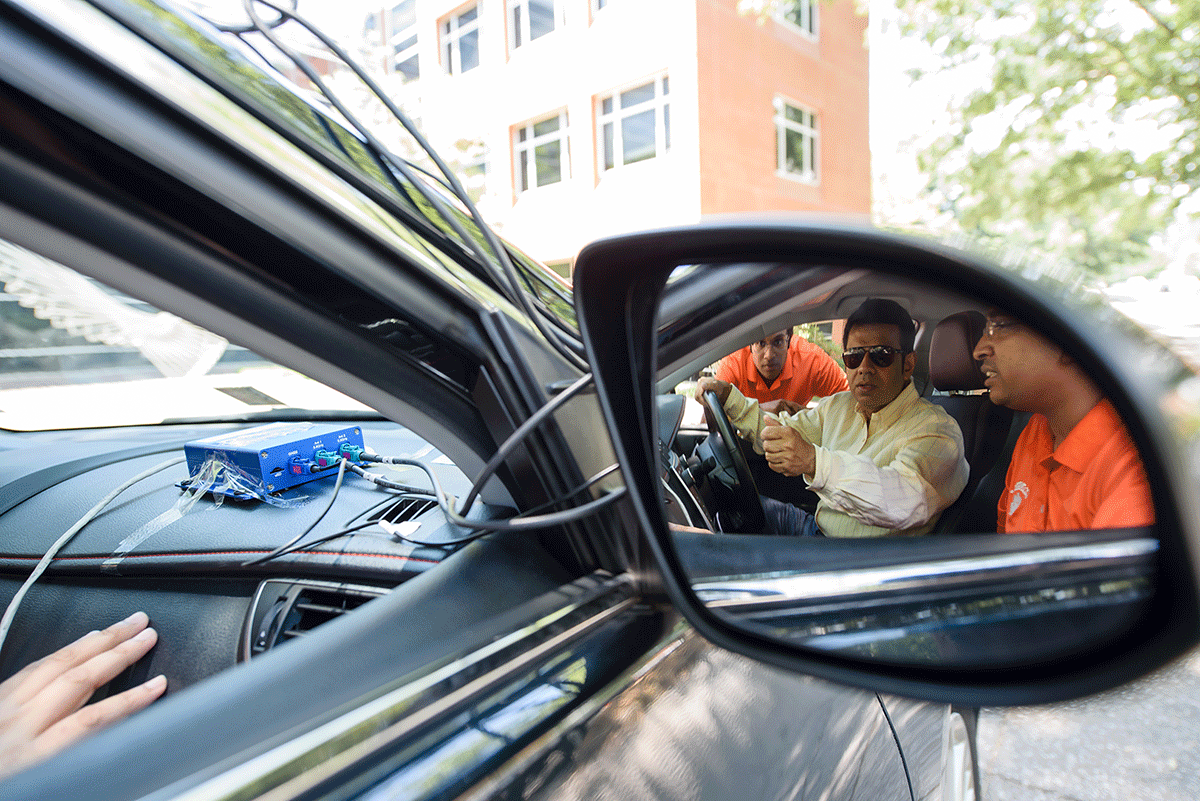
The Chowdhury team works with a “smart car.”
Work in progress
The precedent has already been set in many ways. Clemson researchers have been testing connected-vehicle technology on a 10-mile stretch of Interstate 85 near the Clemson University International Center for Automotive Research in Greenville.
The research that is done as part of the center is expected to create opportunities for undergraduates and graduate students to learn about the latest transportation technology. Those opportunities could include new courses developed by the center’s faculty, and internships at the center and public and private firms.
Activities for K-12 students are also planned. James R. Martin, the chair of the Glenn Department of Civil Engineering at Clemson, said the collaboration will enable South Carolina to take a major leap forward in transportation research while also creating the workforce of the future.
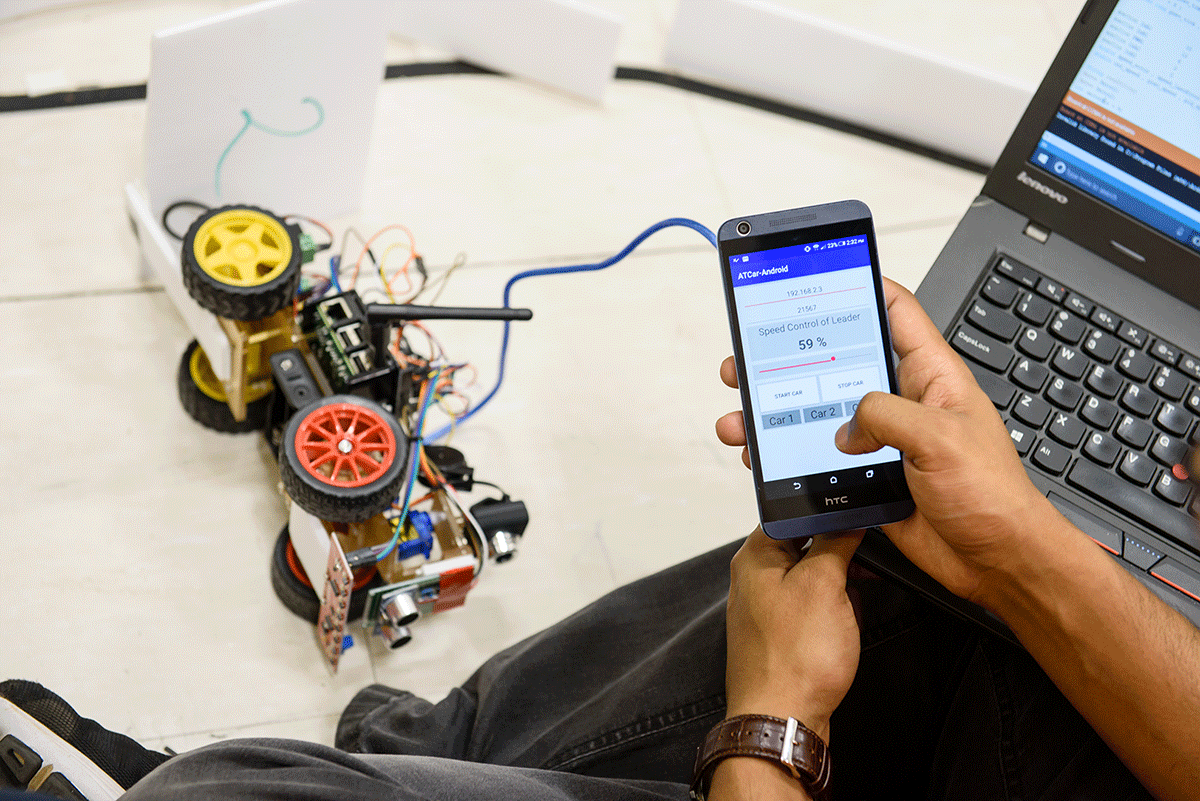
Data gathered from multiple sources is used to study traffic patterns.
“Transportation is a pillar of the state’s economy, a vital asset for the companies big and small that employ thousands of South Carolinians,” he said. “The collaborative research that will be done as part of this center will help create the connected and automated, multimodal transportation technologies that will foster growth in the state and nationwide economy. I congratulate Dr. Chowdhury for leading this effort,” said Martin.
Amy Apon, the chair of the division of computer science in the School of Computing, is among the collaborators on the center. She said Clemson is uniquely qualified to lead the center for South Carolina.
“We have faculty with expertise in connected intelligent transportation systems in different areas, including civil engineering, computer science, electrical engineering and automotive engineering,” she said. “We also have unique facilities, including the Palmetto Cluster high-performance computing system.”
Anand Gramopadhye, dean of the College of Engineering, Computing and Applied Sciences, congratulated Chowdhury and his team on landing the grant for the center.
“Clemson University and South Carolina are well-positioned to advance transportation technology research,” he said. “Our efforts are crucial to meeting the economic, environmental and societal goals of the state and nation.” ✲
AUTOMOTIVE ADVANCES:
A DIRECT IMPACT ON ADVANCED MANUFACTURING
As manufacturing becomes more automated in South Carolina, the work of BMW SmartState Chair Laine Mears connects industry with higher education.
By Paul Alongi
Laine Mears of Clemson University is playing a key role in helping advance South Carolina’s reputation as a hub of advanced manufacturing. His peers in academia and industry are taking notice of his efforts to meet the challenge ahead. “The jobs that are created today are at a higher technical level, with commensurate pay,” said Mears. “In talking with companies in South Carolina, I find that these jobs are already here. We just need education streams to push people to greater technical depth to fill them.”
That’s exactly what Mears has done and plans to continue doing.
Mears’ credentials underscore his impeccable qualifications. He was named the BMW SmartState Chair in Automotive Manufacturing just a few months before he was named Fellow of two separate professional organizations: first the American Society of Mechanical Engineers, and then SME. He also received the Thatcher Bros Prize from the London-based Institution of Mechanical Engineers.
Colleagues say that Mears’ work has been key in strengthening Clemson’s ties to industry leaders, including BMW, GE, Honda and numerous automotive suppliers. The research he does has a direct impact on how cars and other products are manufactured in the Upstate and beyond.
A growing number of jobs requires greater understanding of technology, as manufacturing becomes more automated and reliant on data.
To that end, one of his latest projects brings together Clemson researchers and Greenville Technical College students to work on a prototype vehicle assembly line. Next-generation autoworkers will be ready for new technology because they are helping develop it, Mears said.
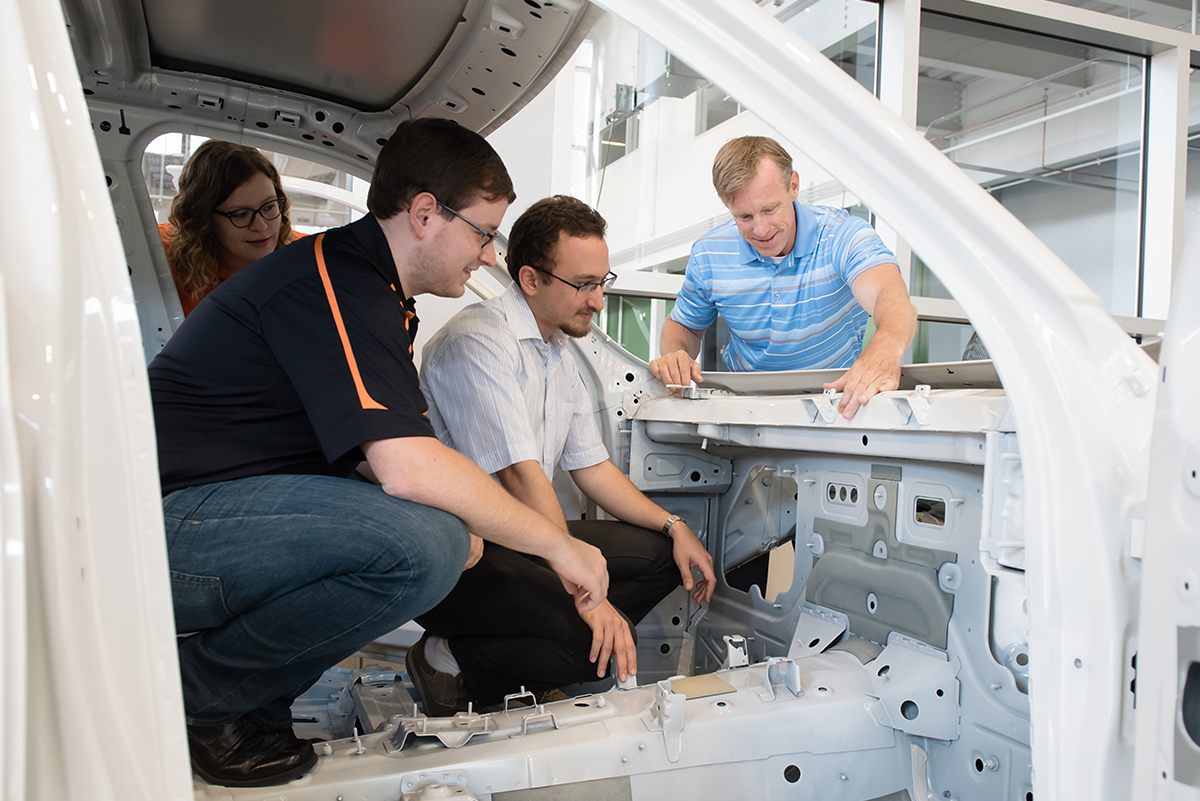
Laine Mears works with CU-ICAR graduate students.
Mears had 10 years of industry experience with SKF Bearings and Hitachi Unisia Automotive before arriving at Clemson. While working, he attended Georgia Tech’s distance-learning program to get his master’s degree and then returned full time to earn his Ph.D. Both degrees were in mechanical engineering.
In 2006, he became a founding faculty member in Clemson’s automotive engineering graduate program, which is based at the Clemson University International Center for Automotive Research in Greenville. Mears’ position as endowed chair was made possible by BMW Manufacturing Co. and the lottery-funded SmartState program.
Andreas Gücker, vice president for Quality and Total Vehicle at BMW Manufacturing, said that endowed chair positions help retain talent that might otherwise leave for other states.
“Dr. Mears is working on the cutting edge of advanced manufacturing, a critical piece of South Carolina’s economy,” Gücker said. “He is highly deserving of this endowed chair position. The work he is doing is creating the technologies and processes that will directly benefit industry, while educating the workforce of tomorrow.”
Clemson President James P. Clements said Mears’ academic experience and deep knowledge of the state’s manufacturing economy make him an ideal choice for this important role.
“Dr. Mears has distinguished himself as a leading researcher and an outstanding teacher whose students have excelled in academia and industry,” Clements said. “With his labs and office located in Greenville, he has demonstrated a strong commitment to advanced manufacturing in South Carolina that will serve our students and the state well in this new position.”
Mears’ recent ASME distinction as Fellow puts him in the top 2.9 percent of an organization that has 120,248 members. It is awarded by the ASME Committee of Past Presidents. Congratulations came from across the country, including from Zoran Filipi, who also is an ASME Fellow and chair of Clemson’s automotive engineering department.
“This is a high honor that goes to a small fraction of ASME members,” Filipi said. “It is a testament to his hard work, innovative approach and collaboration with industry. This is an honor not only for Laine, but for the department, CU-ICAR and the industry collaborators that have supported his efforts.”
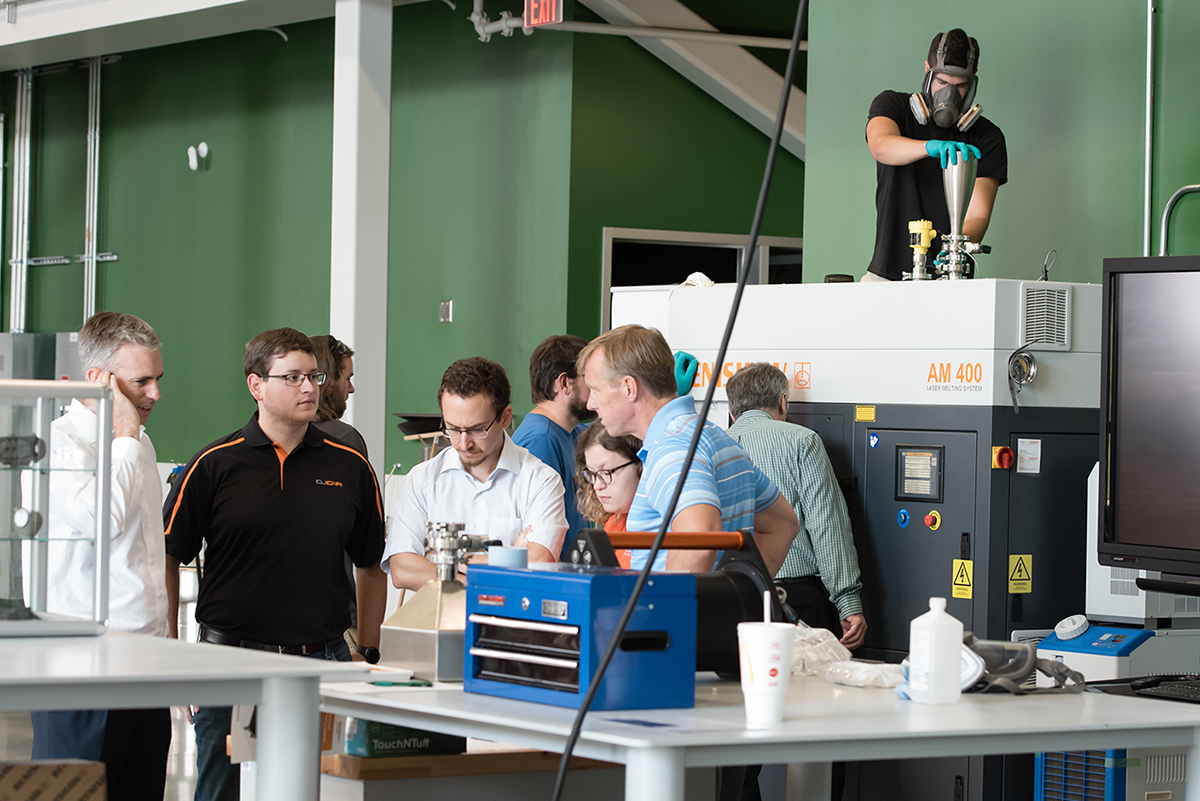
The CU-ICAR and Greenville Tech partnership is vital to creating an empowered workforce.
Mears was active in establishing eight courses in the automotive engineering program, many in conjunction with personnel from original equipment manufacturers. The courses address core automotive industry needs and have helped produce automotive integration engineers who have been recognized widely throughout the industry, colleagues said.
His research portfolio accounts for over $7 million in funding. Mears has worked with more than 25 graduate students and postdoctoral researchers, and more than 20 undergraduates.
One of his master’s students, Valerie Pezzullo, claimed a $100,000 first-place prize in 2014 in the MTConnect Challenge 2, sponsored by the U.S. Department of Defense. The application she entered was a design for an open-architecture platform to detect vibrations in metal-cutting machines so that corrections could be made before parts are damaged.
Mears’ awards include the 2011 SAE Ralph R. Teetor Educational Award, the South Carolina Governor’s Young Researcher Award for Excellence in Scientific Research, and the Institution of Mechanical Engineers’ George Stephenson Gold Medal. His Thatcher Bros Prize was for a paper he co-authored with Yujie Chen, Cristina Bunget and Thomas R. Kurfess.
He has generated more than 130 archival journals and reviewed conference publications. Mears also collaborated on the seminal textbook Electrically Assisted Forming – Modeling and Control.
Those writing letters to ASME in support of Mears included Ralph L. Resnick, president and executive director of the National Center for Defense Manufacturing and Machining. He said that Mears’ research portfolio has been more than half industry-funded with many sponsors returning for additional phases based on his past work.
“This continued funding directly demonstrates his power for translational research,” Resnick said. “These are solutions that impact a company’s bottom line, but require the generation of new knowledge in terms of modeling, control and information management.
“Dr. Mears has demonstrated exceptional and unique capabilities in balancing these approaches.”
Anand Gramopadhye, dean of the College of Engineering, Computing and Applied Sciences, said Mears’ honors are well-deserved. “Dr. Mears is an excellent scholar and educator,” Gramopadhye said. “He has conducted cutting-edge research and created innovative academic programs that directly address industry needs. He has developed exceptional collaborations and is a leader in his field. I congratulate him.”
By joining industry and higher education, Mears’ work is benefiting the economy and manufacturing while also ensuring that Clemson students are ready for future challenges. ✲
AUTOMOTIVE ADVANCES:
DRIVEN SPIRIT
The legacy of a fallen NASCAR driver lives on through Clemson University professor.
By Paul Alongi
Robert Prucka was still too young to legally drive a car by himself but not too young to work on engines when one of his favorite NASCAR drivers, Alan Kulwicki, died in a plane crash. Just as the crash’s 24th anniversary approached, Prucka took on a new position at Clemson University named for his fallen childhood hero.
Prucka, an automotive engineer whose passion for engines is alive as ever, is the new Kulwicki Endowed Professorship in Motorsports. His first big project is guiding a team of graduate students and industry sponsors in building a next-generation Rallycross race car at the Clemson University International Center for Automotive Engineering in Greenville.
“It’s awesome, and it’s humbling,” Prucka said. “It’s a big responsibility to carry on his spirit. He left big shoes to fill.”
Kulwicki received a bachelor of science in mechanical engineering from the University of Wisconsin-Milwaukee and applied what he learned to make his car go faster. When Kulwicki won the 1992 Winston Cup Championship, Prucka was a teenager growing up in Monroe, Michigan, a small town amidst the cornfields south of Detroit. He was a NASCAR fan and the kind of kid who loved working on engines, whether they powered cars, chainsaws or lawnmowers.
“Alan Kulwicki was an engineer, and he owned and drove his own car,” Prucka said. “He used his engineering knowledge to make his small team more successful. In the 1990s, it was rare.”
Kulwicki and three others died on April 1, 1993, when a small plane crashed near Blountville, Tennessee. The plane had just left Knoxville, where Kulwicki had been signing autographs at a Hooters restaurant as part of his new sponsorship deal.
Among those killed was Mark Brooks, the 26-year-old son of former Hooters restaurants chairman Robert H. Brooks. The elder Brooks, a Clemson alumnus, later provided the funds that allowed the University to establish the Brooks Center for the Performing Arts, the Kulwicki Endowed Professorship and what is now called the Robert H. Brooks Sports Science Institute. He died at 69 years old in 2006.
Zoran Filipi, chair of Clemson’s automotive engineering department, said the contributions are helping the Kulwicki and Brooks names live on through the University.
“Dr. Prucka’s passion for motorsports makes his new position a fitting honor,” Filipi said. “He is an outstanding teacher and scholar. Students are consistent in saying that he is instrumental in complementing science with the hands-on experience that prepares them for careers in the automotive industry.
“In addition, Robert has been effective in using motorsports as a way to boost interest among the middle and high school students for STEM — science, technology, engineering and math.”

Robert Prucka
Next generation gearheads
Prucka is now focusing much of his attention on Deep Orange 9. The ninth installment of the much-celebrated program will be the first aimed at motorsports.
Rallycross cars, which will be the model for Deep Orange 9, are modified, high-horsepower road cars that compete in sprint races on dirt and paved tracks. Prucka said the extreme-sport culture will help excite students. The potential is reflected in YouTube videos that capture tens of millions of views, including a 10-minute clip of Ken Block’s Gymkhana series that has been viewed more than 90 million times.
But the new Deep Orange car will be about more than racing. Students will also try to make the car safer and more fuel efficient while reducing emissions.
“I love it,” Prucka said. “Deep Orange is a shining star, an example of the right way to educate students for industry. Cars are not four wheels and a steering wheel. They are a mobile electronics platform with advanced powertrains and miles of wire.
“They have the complexity of an airplane, and it’s tough to teach out of a textbook. You need to learn by doing. With Deep Orange, you teach them by building a vehicle.”
Students will also use sensors to track drivers’ eyes and reaction times. The information combined with artificial intelligence could help search for signs of concussion, a problem now largely self-diagnosed in racing. Also as part of the project, marketing students working under associate professor Jennifer Siemens will look for new ways to make Rallycross even more exciting to viewers.
Engineering performance
Prucka still remembers when Kulwicki died and watching a transporter carry the driver’s car around Bristol Motor Speedway for a final tribute.
“It’s one of those images you don’t forget,” Prucka said from his CU-ICAR office, nearly a quarter century removed from the memory.
But Kulwicki’s legacy lives on not only in the memories of fans and admirers, but also in the way engineers have revolutionized NASCAR.
“Today there’s an engineer on every pit box and at least two or three more back at the shop,” Prucka said. “It all started from him. It’s an essential part of being successful in motorsports.”
Prucka, a member of the automotive engineering faculty since 2008, has long been central to the Brooks legacy at Clemson. He previously served as director of the Robert H. Brooks Sports Science Institute, and remains active in the institute today.
Prucka has received several honors, including SAE International’s Ralph R. Teetor Educational Award and the College of Engineering, Computing and Applied Sciences’ Murray Stokely Award for Outstanding Teaching.
Anand Gramopadhye, the college’s dean, said Prucka is well-positioned to carry on the spirit of his childhood hero.
“His accomplishments, passion for students and close work with industry make him an excellent fit for the Kulwicki Endowed Professorship in Motorsports,” Gramopadhye said. “This is a well-deserved honor, one that helps further the legacies of the Brooks family and Alan Kulwicki.” ✲
END ♦ IDEAS Fall 2017
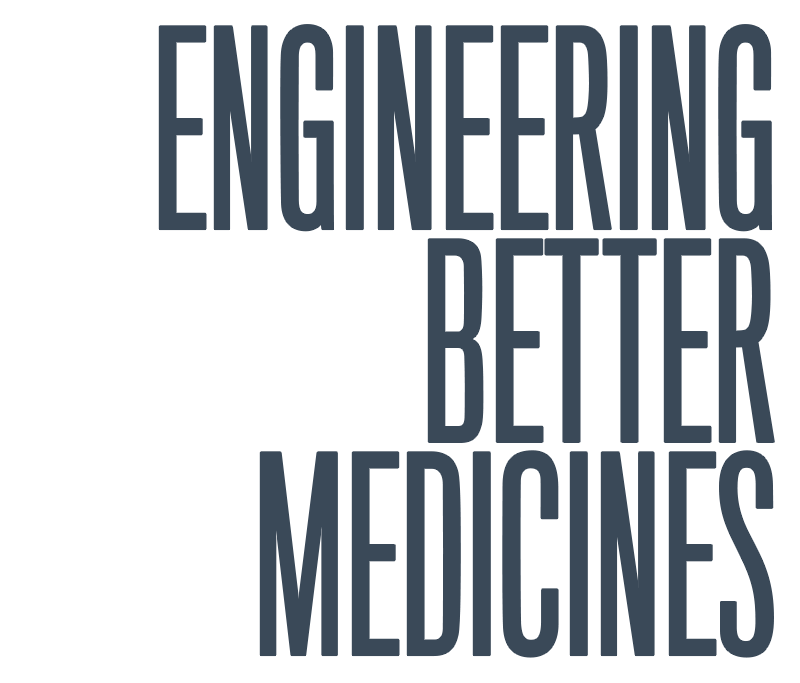
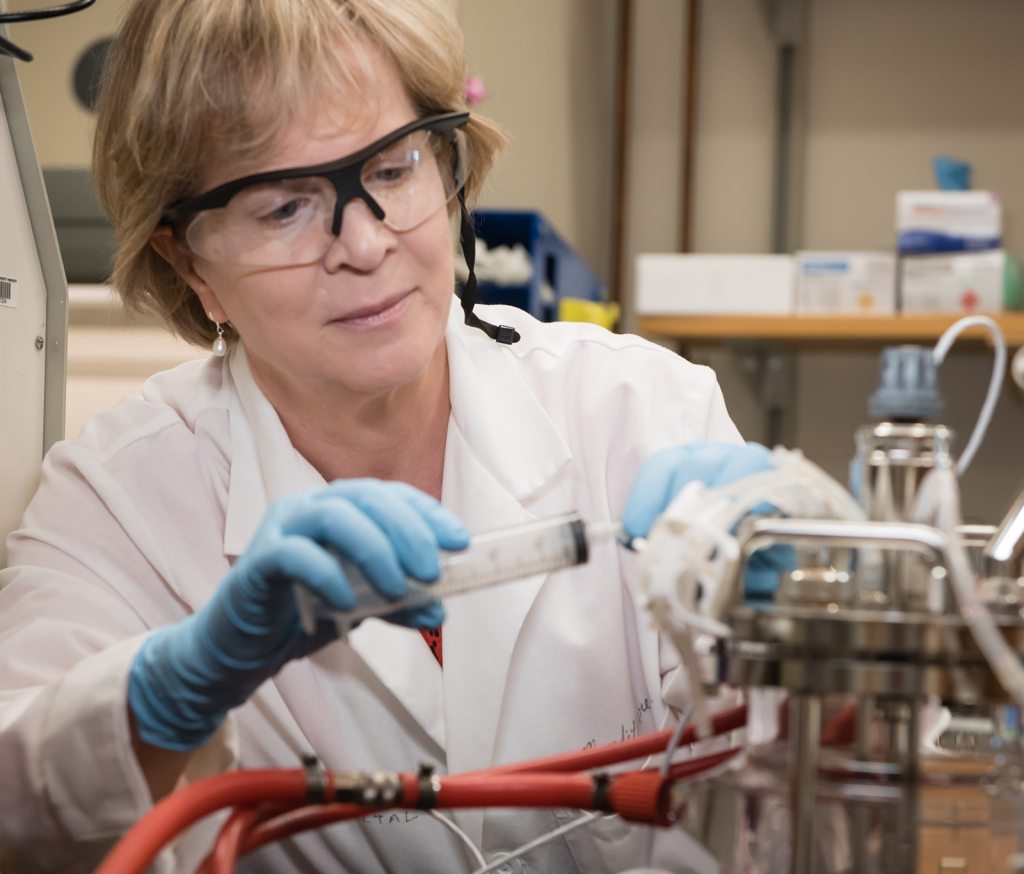
Sarah Harcum receives $6 million from the National Science Foundation.
Sarah W. Harcum of Clemson University is leading a team that has received $6 million for research that could help lower the cost of several drugs that run into the thousands of dollars per treatment and fight some of the world’s most debilitating ailments.
The team brings together researchers from three states to seek better ways of engineering Chinese hamster ovary cells, which are used to manufacture more than half of biopharmaceuticals.
The potential impact is immense. Products from these cells represent more than $70 billion in sales each year and include drugs for Crohn’s disease, severe anemia, breast cancer and multiple sclerosis.
The focus for Harcum and her team will be on the Chinese hamster ovary “cell line.”
A cell line is developed from a single cell culture and starts with uniform genetic composition that would ideally remain unchanged. But that genetic composition drifts as the cells reproduce, and they become less effective at creating the drug they have been engineered to create.
As a result, manufacturing becomes more expensive, said Harcum, a professor of bioengineering.
“We expect by the end of the study we will have identified some genes that cause the instability,” she said. “What would be even better is if we can prove by modifying those genes we can make a genome that is more stable. With success, the Chinese hamster ovary cell line will stay more stable during the manufacturing. We hope to get that drift to be reduced — that’s the ultimate goal.”
The four-year grant was among eight awards totaling $41.7 million announced by the National Science Foundation’s Established Program to Stimulate Competitive Research, or EPSCoR.
Harcum’s research strikes at the heart of one of the toughest challenges in manufacturing biopharmaceuticals.
Biopharmaceuticals are different from more conventional drugs, such as ibuprofen and acetaminophen, which are based on what researchers call “small molecules” and are relatively easy to manufacture.
Biopharmaceuticals, however, are 1,000 times larger than the small molecules and have structures that are more complicated.
While biopharmaceuticals can treat disease that small-molecule drugs cannot, manufacturing these large-molecule drugs is difficult. They require additional monitoring, control and analysis throughout the manufacturing process.
Harcum and her team are aiming to improve the process not for a single drug, but for a wide range of biopharmaceuticals.
The project is expected to increase patient access to expensive medicines, while helping educate the professionals headed for the advanced biomanufacturing workforce.
As part of the project, researchers are planning to promote diversity on the research team by including several undergraduate and graduate students who are from groups underrepresented in engineering. Also, three tenure-track faculty members from underrepresented groups will be mentored by more senior researchers.
Harcum is the principal investigator on the grant, and she is collaborating with researchers from the University of Delaware, Tulane University and Delaware State University. They are calling the project “Advanced Biomanufacturing: Catalyzing Improved Host Development and High Quality Medicines through Genome to Phenome Predictions.”
Co-principal investigators are Kelvin H. Lee, the Gore Professor of Chemical Engineering at the University of Delaware, and Anne S. Robinson, chair of the Department of Chemical and Biomolecular Engineering at Tulane University.
Robert Jones, executive vice president for academic affairs and provost at Clemson, said the project underscores the value of collaboration.
“The grant is helping build a sustainable research infrastructure in three EPSCoR-eligible states, enabling each of the four institutions involved to build on each other’s strengths,” he said. “Further, the grant helps prepare a diverse talent pool for the biomanufacturing industry. We are well positioned for lasting impact.”
Martine LaBerge, chair of the Department of Bioengineering at Clemson, said Harcum’s extensive work with Chinese hamster ovary, or CHO, cells uniquely qualifies her to lead the project.
“Dr. Harcum has 20 years’ experience working with CHO cells and has used genomic approaches to study CHO cells for quite some time,” LaBerge said. “She is very well aware of the industrial issues that affect CHO cells.”
Anand Gramopadhye, dean of the College of Engineering, Computing and Applied Sciences, said the project addresses some of the nation’s most critical needs, while building research infrastructure in three states, with Clemson taking the lead for South Carolina.
“By seeking to engineer better medicines, Dr. Harcum and her team are focused on one of the 21st century’s grand challenges,” he said. “They are also using this project to enhance diversity in the talent pipeline. The size of the award attests to its crucial importance.” ✲
SAFETY FIRST
Clemson bioengineers aim to revolutionize the medical device industry.
By Paul Alongi
Clemson University bioengineers are working to expand a program that teaches students how to clean, sterilize and design medical instruments so they can be reused, a practice at the center of a fast-growing industry that helps cut back on biohazardous waste and reduces hospital costs.
Melinda Harman, an assistant professor of bioengineering, said that the GreenMD program produces a regular crop of graduates, and that hundreds of other students have taken classes as electives.
The program started in response to an industry that has grown up around medical-device reprocessing, which is closely regulated by the Food and Drug Administration. Many instruments, ranging from ankle braces to cautery devices, can be reused, but only if they are cleaned and sterilized according to strict protocols.
It’s an issue increasing in importance. Recent infections linked to contaminated devices at hospitals have made patient safety a top priority, Harman said.
“According to market research, the global reprocessed medical devices market was valued at $980 million in 2015 and is forecast to reach $3.35 billion by the end of 2024,” Harman said.
Cleaning and sanitizing devices is not as simple as soaking them in alcohol or steaming away the germs. Some devices come with a 50-step cleaning process.
The GreenMD program allows graduate students to either pursue a certificate or take classes as electives toward graduate degrees. Harman’s growth strategy is to reach out to students in majors outside bioengineering and to working professionals interested in expanding their knowledge to include medical device reprocessing.
Her outreach includes the Biomedical Engineering and Surgical Technology (BEST) Design Workshop. The event was held in March and drew about 40 participants. They included Clemson faculty and students from various departments, professionals working in clinical and industrial settings, and a representative from SureTek Medical, a reprocessing company that has been a strong supporter of GreenMD.
Activities included networking and a “prototype pitch” from five bioengineering teams.
“The BEST Design Workshop is becoming a cornerstone event in the GreenMD program,” Harman said. “As an educator in bioengineering, this type of challenge-based learning allows us to see the coursework in action as the students apply knowledge they bring from all of their previous courses and experiences. This event really highlighted the advantages of engaging cross-disciplinary teams for medical device design, with enthusiastic interactions between attendees.”
The GreenMD courses are a great fit for all engineering disciplines, especially industrial, electrical and mechanical engineers, she said.
Some other programs in the field are focused on medical device design, and some emphasize cleaning and sterilization. None but Clemson’s integrate the two fields, Harman said.
Megan Hanschke said she saw the GreenMD program as a way to set herself apart in her master’s program.
“It seemed like a new, up-and-coming field, something that would be really useful and a job that I would want,” she said.
The lab most often used by students and faculty members in the program is at the Clemson University Biomedical Engineering Innovation Campus, or CUBEInC. The campus encompasses an entire floor of a high-rise building at Greenville Health System’s Patewood campus.
The GreenMD curriculum was developed with input from two industry leaders, STERIS Applied Sterilization Technologies of Spartanburg and Stryker Sustainability Solutions of Phoenix. Several of the program’s students have had internships at STERIS and other local employers.
Clemson’s Board of Trustees approved the GreenMD program in October 2011, classes began in 2013 and the first graduates completed the program in 2015.
Joey Lowe, plant manager at STERIS Applied Sterilization Technologies (AST), said the collaboration between the company and Clemson is mutually beneficial.
“STERIS AST in Spartanburg hosts multiple tours annually with the Clemson bioengineering department,” he said in a written statement. “The Spartanburg facility provides both of the major sterilization technologies, gamma radiation and ethylene oxide gas, and the tours allow students to see firsthand how medical devices are sterilized.
“The facility visits are also single-day classes with a ‘sterilization 101’ overview of both gamma radiation and ethylene oxide technologies. It provides STERIS AST an opportunity to interact directly with intelligent and talented students who will soon enter the bioengineering and medical device manufacturing and sterilization industry workforce.
“Our facility implemented an internship program in 2016 dedicated solely to Clemson University with the hopes of attracting students interested specifically in the medical device sterilization industry. We expect the partnership with Clemson University to continue to grow in the future.”
Martine LaBerge, chair of the Department of Bioengineering, said the program underscores the department’s long history of leadership in research and education in close collaboration with industry.
“GreenMD increases students’ marketability in the medical device industry and creates a new paradigm in health care education,” LaBerge said. “I’d like to congratulate our latest graduates for a job well done.” ✲
Student Spotlight
SARAH DONAHER
Environmental Engineering major
Charlotte, NC
By Hannah Davis
Sarah Donaher toured 18 college campuses before finding her undergraduate home in Clemson’s Calhoun Honors College.
“I immediately felt like this was a special place,” says Donaher. “Four years later, that feeling hasn’t changed.”
Collaboration with faculty defined her path to success, starting in the radiochemistry lab of Brian Powell, a field professor in environmental engineering and science.
Donaher’s work on plutonium sorption studies led her to co-authoring a paper, winning multiple awards and studying sustainable energy technologies during a summer abroad in Germany.
She spent her final semester partnering with assistant professor Nicole Martinez to study the effects of radiation on the environment. Exploring radioecology alongside another female inspired her in new directions of people to talk to, papers to read and projects to consider.
Donaher believes building relationships is key: “My professors have written letters of recommendation, nominated me for awards, listened to my questions and given the best advice. That feeling of mutual respect is so important in cultivating an atmosphere of support throughout the University.”
As a student with diverse research interests, she thrived within the Grand Challenge Scholars Program, an extracurricular experience designed to prepare the next generation of world-changing engineers through five main emphasis areas: research/creative, multidisciplinary, business/entrepreneurship, multicultural and social consciousness. In 2014 Clemson became just the 19th engineering school in the nation to offer this program.
“The Grand Challenge Scholars Program really helped me form a more cohesive brand for myself,” explains Donaher. “I tailored my activities around one or two emphasis areas, but still felt motivated to branch outside of my comfort zone.”
What’s next for the new graduate? Donaher’s Clemson experiences propelled her to a Graduate Research Fellowship from the National Science Foundation — a prestigious honor for graduate students. This award will fund five years of research as she pursues a Ph.D. in marine sciences at the University of North Carolina at Chapel Hill. ✲
STRONGER THROUGH DIVERSITY
Clemson is ranked as the nation’s 20th highest producer of African-American undergraduates receiving baccalaureate degrees, according to Diverse Issues in Higher Education.
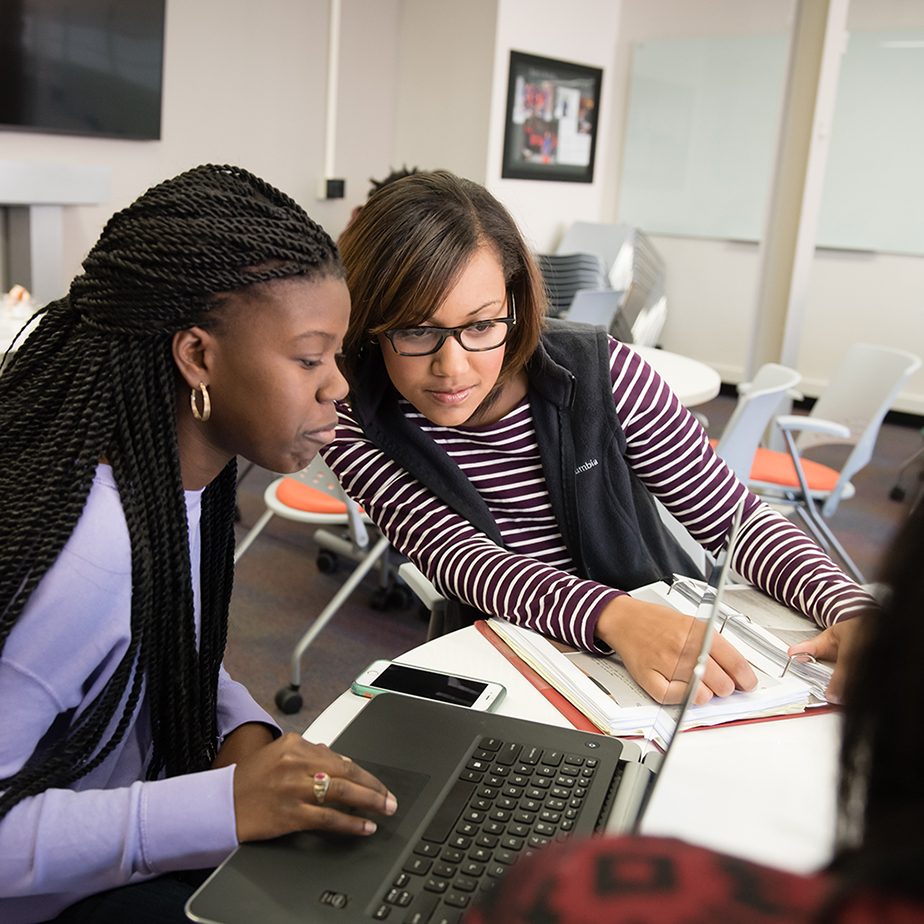
Learn to inspire
Crystal Pee, a chemical engineering major from Conway, attributes her success to a vibrant support system.
She’s actively involved in PEER and WISE, an organization designed to support underrepresented minorities and females in engineering and science majors.
Through PEER, Pee said she found not only academic and moral encouragement, but also a mindset to help others.
By her senior year, Pee was mentoring 13 other students, who sometimes told her, “I don’t know if I can do it.”
“It’s your job to step in and say, ‘You can do it,’” Pee said. “We have the resources. You’re their parent when you need to be. And you’re their friend when you need to be.”
Pee also served as chapter president of the National Society of Black Engineers. That leadership experience led her to a conference in Minneapolis, where she landed an internship with a multinational food company. ✲

Empowered to excel
Computer engineering major and Rock Hill native Jacovia Cherry is dedicated not only to earning her college degree, but also to mentoring other students who share similar aspirations and interests.
She’s an ambassador for RiSE, a residential community for STEM majors. Most recently she served as a resident assistant in CONNECTIONS Experience, a Living-Learning Community and peer-mentoring program for minority or first-generation students.
“These two organizations did a lot for me, and so I like to give back as much as I can,” Cherry says. “Being a mentor has taught me how to be a role model and advocate for students like myself.”
She balances multiple extracurricular activities, including a UPIC internship for visualization under supervisor Oyewole Oyekoya, who inspired her career ambition: working in virtual reality.
“Clemson offers tons of services through the career center to prepare you for a job or graduate school, plus co-op, internship and research opportunities,” says Cherry. “The quality of education you see here is unmatched. ✲
AJ MILLER
Computer Science and Physics double major
Fort Mill, SC
By Hannah Davis
AJ Miller is passionate about cutting-edge technology, scientific discovery and interdisciplinary collaboration. As a double major in computer science and physics, he’s built valuable relationships across campus that challenge him to view the world from different perspectives.
Miller entered freshman year in the general engineering program, but also had an interest in physics. After a conversation with Christopher Plaue, senior lecturer and undergraduate coordinator in the School of Computing, he added computer science as a second major when he learned that he could do both and still graduate on time.
Plaue also connected Miller with a summer internship at Home Depot’s corporate headquarters, where he helped develop a software system that now processes millions of dollars each year at 2,500 stores.
“I’ve definitely benefited from encouragement to pursue my passions,” says Miller. “Clemson faculty are so helpful in providing hands-on experiences; they’re even happy to get you involved in their own research.”
His computer programming skills caught the attention of Chad Sosolik, an associate professor of physics. Now Miller is part of Sosolik’s undergraduate Creative Inquiry research team, and recently had the opportunity to submit his findings on the interactions of highly charged ions for publication.
But ask Miller about his most rewarding undergraduate activity, and he’ll talk about helping others.
He provides tutoring services through the University’s Peer Assisted Learning (PAL) program; coordinates general engineering study groups at the Academic Success Center; helps transfer students get up to speed on the coding languages used at Clemson; and serves as head coordinator of the Calculus Fight Club, an innovative series of pre-exam study sessions that draw as many as 600 students spread over multiple facilities.
“It’s exciting to enable my peers to perform better in tough classes,” Miller says. “It’s one thing if I know the material, but if I can pass that knowledge on to others, together we’ll accomplish so much more.” ✲
Alumni Spotlight
ALUMNI RECEIVE COLLEGE’S HIGHEST HONOR
Meet the first woman inducted into the Thomas Green Academy.
by Paul Alongi
It’s always special when some of the college’s most accomplished alumni gather in the same room, but one night in May at the Madren Conference Center was exceptionally memorable. Among the three engineering alumni prepared to receive the college’s highest honor was the first woman, Janine Anthony Bowen. Joining her in the honor were Bob Hambright and Mitch Norville.
All three were inducted into the Thomas Green Clemson Academy of Engineers and Scientists, a distinction that goes to fewer than 0.2 percent of the college’s alumni. Also that night, the college honored three alumni with the Outstanding Young Alumnus award. This year’s awardees were Brent Beason, president of B&W Fiberglass; Tony Elliott, co-offensive coordinator of the Clemson football team, 2016 National Champions; and Jeff DiMaio, chief operating officer of Pendleton, S.C.-based Tetramer Technologies.
Those in attendance included the honorees’ families; Clemson President James P. Clements and his wife, Beth Clements; and Executive Vice President for Academic Affairs and Provost Robert Jones. It was the fourth distinguished group of inductees that Anand Gramopadhye has welcomed to the academy since he became college dean in July 2013.
“All of our honorees are leaving their mark in their own unique way,” Gramopadhye said. “A simple Gandhian philosophy succinctly captures the spirit of how each one of them has conducted themselves: ‘Be the change you wish to see in the world.’ I congratulate each one on a well-deserved honor.”
Here’s a look at each of the academy inductees:
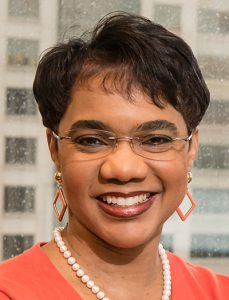 Setting a precedent
Setting a precedent
Janine Anthony Bowen accumulated some Clemson firsts, even before she became the first woman inducted into the academy. She was the first African-American woman to be Miss Homecoming and to receive the Clemson Alumni Association’s highest honor, the Distinguished Service Award.
“It’s a privilege to carry the mantle for so many who take pride and pleasure in what we have been able to collectively achieve,” she said. Bowen received a bachelor’s degree in 1989 and a master’s degree in 1991, both in industrial engineering from Clemson.
Bowen began her professional career with Accenture, CIBA Vision and IBM. She earned a juris doctor from Georgia State University College of Law in 1998 and began to practice with McKenna Long & Aldridge LLP.
Bowen became partner at that firm before founding JACK Attorneys & Advisors. She merged the practice in 2015 with the national law firm LeClairRyan PC, where she is now a shareholder and technology practice leader.
Bowen is generous with her time and treasure. She is an active member of the Board of Directors for the Clemson University Foundation. She is also on the College of Engineering, Computing and Applied Sciences Advisory Board.
Bowen previously served on the boards of the Clemson Alumni Association and the National Clemson Black Alumni Council. She has established the Janine Anthony Bowen ’89 Industrial Engineering Endowment and the Jacquelwyn Willis Anthony PEER Endowment, named in her mother’s honor.
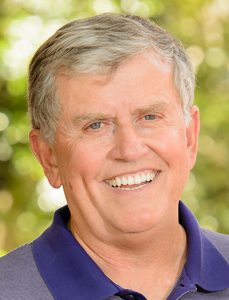 Creating the leaders of tomorrow
Creating the leaders of tomorrow
Bob Hambright said that he and his wife, Susan, decided to create more and better leaders when he retired from Balfour Beatty Construction as chief executive officer of the Southeast division. They were unsure how to do it at first, but then the answer came.
“My company, instead of giving me a gold watch when I retired, set up an endowment for leadership in the college in our name,” said Hambright, who holds a bachelor’s degree in mechanical engineering from Clemson.
It’s been a privilege to carry the mantle for so many who take pride and pleasure in what we have been able to collectively achieve.
– Janine Anthony Bowen
The Hambrights have grown the endowment 10 fold. Their contributions have enabled the college to start the Robert B. ’70 and Susan B. Hambright Annual Leadership Program in Engineering. Eight engineering students received awards in 2016, and the program goes into its sixth year in the fall. Each student receives $3,000 for leadership-related programs and a $1,000 merit award.
The Hambrights have enjoyed forming relationships with some students in the program and have stayed in touch after graduation. The program is overseen by John DesJardins, a member of the bioengineering faculty who nominated Hambright for induction into the academy.
“To us it’s confirmation that we’ve got the right guy, and we’re on the right path,” Hambright said. “Thank you.”
The day after the induction ceremony, the Hambrights announced a Give Day contribution that comes on top of a previous contribution. The two contributions together allowed Clemson to create the Hambright Distinguished Professorship in Engineering Leadership. The professorship is held by DesJardins.
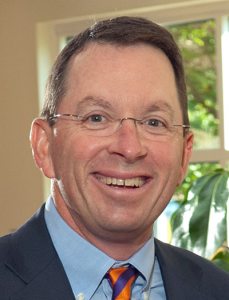 Clemson is about connections
Clemson is about connections
Mitch Norville was a young engineer working for Exxon when a travel companion sitting separately on a flight to Philadelphia found another Clemson graduate. Norville met the fellow alumnus, an architect who had graduated about 20 years earlier, after he was off the plane and waiting to head to the hotel.
They put their class rings together.
“My ring was new and shiny. His ring was warped to a nub,” Norville said. “You couldn’t even read the ‘C’ on the top part. We proceeded to talk about Clemson football and Clemson stuff for 45 minutes in the airport. That’s what Clemson is all about. It’s about being connected to people you don’t even know because you went to school at Clemson.”
Norville later earned his MBA at the University of Virginia and joined Boston Properties as a project manager for the Washington, D.C., area. He rose through the ranks for the next 28 years and in 2007 became the company’s chief operating officer.
Norville retired at 54 years old and started Atlantic South Development in 2015. He and his wife, Carla, have been generous donors to Clemson, contributing to the annual fund since he graduated with a bachelor’s degree in mechanical engineering in 1980. They have also contributed to the President’s Leadership Circle, the Dean’s Leadership Circle, IPTAY, basketball and football. He is chair of the Clemson University Foundation’s Board of Directors.
Perhaps his most significant legacy was the establishment of the Ernest R. Norville Endowed Chair in Biomedical Engineering, named after his late father. The chair is held by Hai Yao.
The gift has been transformative for the Clemson-MUSC bioengineering program, the Clemson University Biomedical Engineering Innovation Campus and main campus. In 2013, Norville received the Alumni Association’s Distinguished Service Alumni Award. ✲
News from Around the College
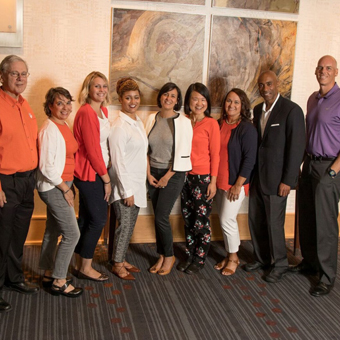
$2 million
Amount that the National Science Foundation is providing for a groundbreaking restructuring of the Glenn Department of Civil Engineering.…
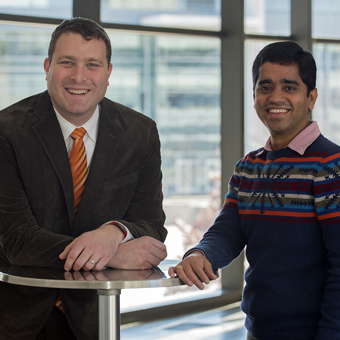
State’s auto industry gets double dose of prestige with high-profile awards
Robert Prucka and Srikanth Pilla were among this year’s winners of the Ralph R. Teetor Educational Award from SAE International. It was the first time in the award’s 54-year history that Clemson has had two honorees in a single year…

Marek Urban recognized by the American Institute of Chemists
The J.E. Sirrine Foundation Endowed Chair and Professor received the Chemical Pioneers Award in honor of his cutting-edge work in polymers. The institute credits Urban with adding antibiotics to polymers used in medical devices, an advance that has saved lives.…
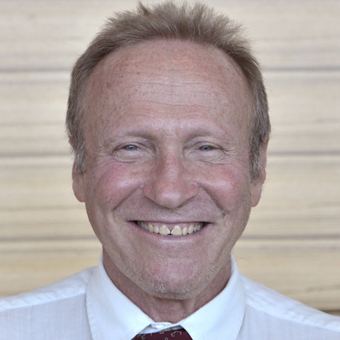
Dean’s Distinguished Professor receives top award
Gary Amy, the Dean’s Distinguished Professor in Environmental Engineering and Earth Sciences, has been recognized with one of his profession’s top awards…
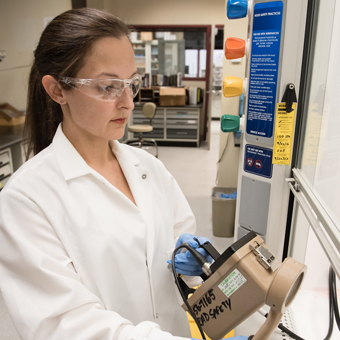
New biosensor could help search for nuclear activity
Research aimed at creating a new biosensor that would help military investigators search for signs of nuclear activities, including weapons development, is moving forward under the leadership of a former naval officer who is now a Clemson faculty member.…
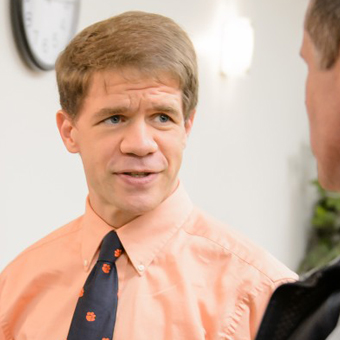
Researchers aim to take the guesswork out of big decisions
The Office of Naval Research is funding a new project designed to give decision-makers hard data that would help in logistical planning and tactical response. Cole Smith, chair of Clemson’s industrial engineering department, is leading the research…

Improved traffic flow through traffic lights a focus of one graduate’s research
Ali Reza Fayazi, who recently graduated from Clemson with a doctoral degree in mechanical engineering, has developed a system that can reduce congestion and harmonize the flow of traffic through traffic lights.…

Researchers get $2.95 million from NSF
Clemson scientists Alex Feltus and Melissa Smith have received a $2.95 million collaborative award from the National Science Foundation to develop cyberinfrastructure aimed at providing researchers around the nation and world with a more fluid and flexible system of analyzing large-scale data.…
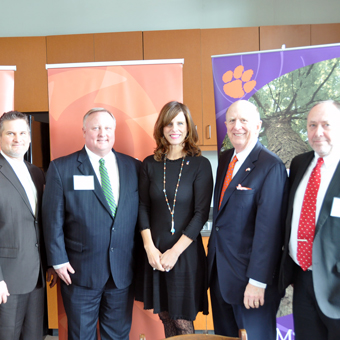
Clemson, Canada experts come together to discuss North America’s energy future
The Clemson University-Canada Center (CUCC) recently joined forces with Clemson’s Restoration Institute; College of Engineering, Computing and Applied Sciences; and the Consulate General of Canada to present Clemson-Canada Energy Day.…

$16 Million
Since 2011, five Clemson researchers have received a total of nearly $16 million from the Department of Defense High-Energy Laser Joint Technology Office. Two new grants were recently announced, both aimed at developing high-energy lasers that could be used as defensive weapons.…

Naren Vyavahare receives $1.47 million from NIH for nanoparticle research
Naren Vyavahare, who holds the Hunter Endowed Chair of Bioengineering, has received $1.47 million from the National Institutes of Health to advance research into abdominal aortic aneurysms.…

Researchers land $3 million to build cyberattack defenses
Hongxin Hu, an assistant professor in the School of Computing, is part of a team from five universities working on a National Science Foundation project to make computer and network systems more secure.…

Leader in analytics research to partner with Clemson
Clemson University’s bold research goals and thousands of students and professors have gained a powerful ally — analytics leader SAS.…
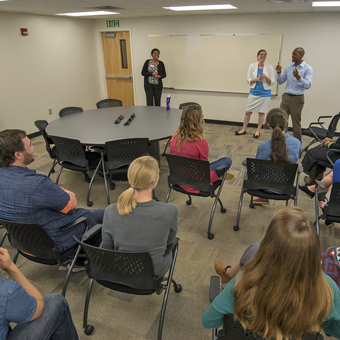
Probe could revolutionize engineering and science education
Some of the top minds in engineering and science education gathered at Clemson University for the STEM Faculty Development Collaboratory.…
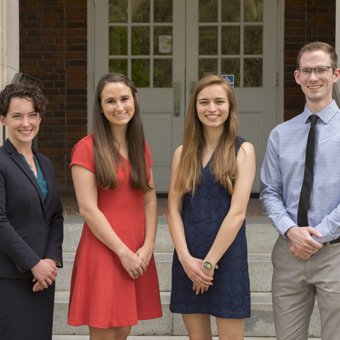
Students win Graduate Research Fellowships
Eight Clemson University students are receiving Graduate Research Fellowships from the National Science Foundation, one of the nation’s top honors for graduate students.…

Global engagement program focuses on Tropical Storm Erica relief effort
Engage Dominica is a new global outreach program that allows Clemson University students to develop projects that will help the small Caribbean island deal with the remaining effects of Tropical Storm Erica.…
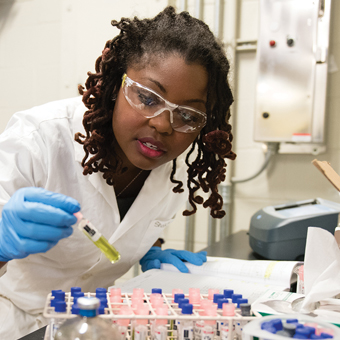
New civil engineering doctoral graduate recognized by Women of Color magazine
In the spring issue of this digital publication, Shakira Hobbs was singled out as one of higher education’s top innovators on the cusp of significant impactful breakthroughs.…
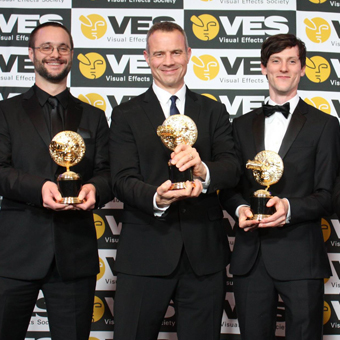
Clemson alumnus wins award for ‘Moana’
Marc Henry Bryant, far left, was on a team that won a Visual Effects Society award for “Outstanding Effects Simulations in an Animated Feature” for its work on the Disney animated film “Moana.”…
Faculty Spotlight
That’s part of the excitement of this job, I will be helping to shape the field of engineering education … .
— Lisa Benson, after being named editor of ASEE’s Journal of Engineering Education (JEE).
Lisa Benson is beginning a five-year term as editor of the nation’s premier publication for research in engineering education. She is a professor of engineering and science education.
Clemson University began the academic year with a total solar eclipse that turned much of the horizon orange. The Aug. 21 eclipse began at 2:37 p.m. and lasted 2 minutes, 37 seconds. While the football stadium remained closed, about 50,000 sky gazers from around the world flocked to campus to watch a natural phenomenon that inspired goosebumps, tears and cheers.



